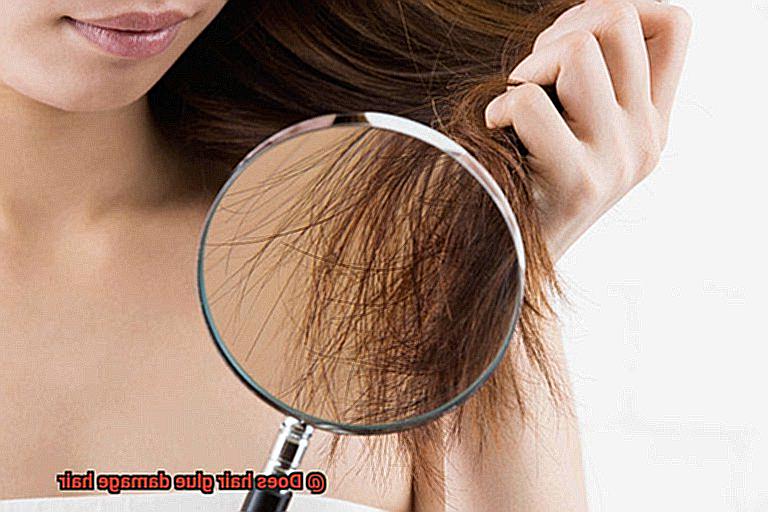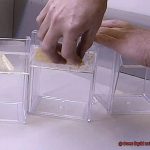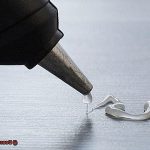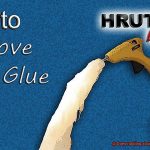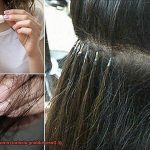Are you a fashion enthusiast who loves experimenting with hairstyles? From sleek bobs to luscious extensions, the world of hairstyling is your playground. But have you ever wondered if hair glue could harm your precious tresses? Stick with us as we unravel the mysteries surrounding this commonly used hairstyling product.
Picture this: it’s a glorious morning, and you’re ready to slay the day with flawless hair. But as you reach for that bottle of hair glue, doubt creeps in – does it damage your locks? If conflicting opinions and myths have left you frustrated, fret not.
In this intriguing blog post, we’ll explore the influential factors that determine whether hair glue poses a real threat to your beloved locks. We’ll dive into the chemistry of hair glue, its application techniques, and the potential consequences that could affect your hair health long-term.
But we won’t stop there. Alongside examining possible downsides, we’ll shed light on effective ways to minimize any potential risks associated with using hair glue. Armed with knowledge, you can make informed decisions about the longevity and wellbeing of your hair.
So whether you’re considering a mesmerizing wig transformation or just curious about the hair glue you’ve been using for years, this blog post is here to lay your worries to rest. Get ready to embark on a journey through science, style, and uncover the sticky truth behind how hair glue impacts your beloved locks.
Potential Damage from Hair Glue
Contents
- 1 Potential Damage from Hair Glue
- 2 Traction Alopecia: Hair Loss Caused by Excessive Tension or Pulling
- 3 Scalp Irritation and Allergic Reactions to Chemicals in Hair Glue
- 4 Removing Hair Glue Can Lead to Breakage, Thinning, and Bald Patches
- 5 Choosing Quality Products and Following Instructions is Essential
- 6 Tips for Minimizing Damage When Using Hair Glue
- 7 Consult a Professional Hairstylist for Guidance on Application, Maintenance, and Removal of Extensions
- 8 Alternatives to Hair Glue
- 9 Conclusion
In the quest for flawless locks, many turn to hair glue as a quick fix for attaching extensions or weaves. However, beneath its adhesive allure lies the potential for hair and scalp havoc. In this captivating exposé, we delve into the dangers of hair glue and reveal expert tips to mitigate the damage.
Traction Alopecia:
A looming menace associated with hair glue is traction alopecia. This insidious condition stealthily steals strands due to unrelenting tension and yanking on the hair. The weight of extensions, coupled with the adhesive’s grip, places excessive stress on natural follicles, leading to their demise and eventual hair loss.
Scalp Agitation and Allergic Outbursts:
Within the chemical concoction of hair glue lies the potential for scalp strife. Unpredictable reactions may ensue, resulting in an itchy, fiery scalp peppered with discomforting redness. For those unlucky few, blisters may even make an unwelcome appearance. Vigilance is key, and immediate cessation of use is imperative if any adverse reactions occur.
Removal Roulette:
Removing hair glue becomes a treacherous game when not executed with finesse. Improper techniques can unravel a weave of destruction, leaving behind fractured strands, thinning patches, or worse yet, barren scalp landscapes. Seek wisdom from professionals or trusted stylists well-versed in delicately untangling these adhesive webs.
The Glue’s True Hue:
Not all hair glues are cut from the same cloth. Discriminating consumers must exercise caution and seek out high-quality products boasting gentler formulations. Take time to scrutinize brands, comb through reviews, and select a reputable adhesive designed to safeguard your precious tresses and scalp.
Damage Control:
To combat potential damage when wielding hair glue, mastering proper application techniques is paramount. Tread lightly, avoiding the siren call of excessive tension and hair-pulling. Grant your scalp respite from extensions periodically, allowing your natural locks to rejuvenate. Remember, meticulous care and maintenance of both extensions and natural hair form an impermeable shield against further harm.
Traction Alopecia: Hair Loss Caused by Excessive Tension or Pulling
Today, we shed light on traction alopecia, a distressing condition triggered by the relentless tension and pulling inflicted upon our precious hair follicles. So, sit back, relax, and prepare to be enthralled as we unravel the truth behind this sticky conundrum.
The Agony of Overstyling:
Let us embark on this journey by understanding the tormentors that cause traction alopecia. This affliction often plagues individuals who incessantly rely on hair extensions, weaves, and tightly-woven hairstyles like braids or ponytails. The ceaseless tugging and straining inflicted upon our locks weaken the very foundations of our hair follicles, ultimately leading to their demise.
The Dark Side of Hair Glue:
Now, let us delve deeper into the heart of this hair-raising narrative: hair glue. This adhesive is a popular choice for attaching extensions or weaves to natural hair, promising a stronghold. However, if mishandled, hair glue can swiftly transform from an ally into a foe for your precious tresses.
The Grip of Glue-Induced Strain:
As extensions are affixed using hair glue, they impose an additional burden on our natural strands. This constant strain gradually weakens the follicles, causing them to fracture and eventually succumb to traction alopecia. Thus, it becomes crucial to tread lightly and be mindful of the weight we subject upon our cherished locks.
A Risky Game of Sticky Roulette:
The plot thickens when it comes to removing glued-in extensions. Improper removal techniques further exacerbate traction alopecia by intensifying the strain and pulling already endured by weakened follicles. Failing to dissolve or eliminate the glue entirely before extracting the extensions turns this process into a perilous game of sticky roulette.
The Fortunate Few:
It is important to acknowledge that not everyone who dabbles in hair glue will encounter the perils of traction alopecia. The severity of this condition varies, influenced by factors such as frequency and duration of use, individual hair type, and resilience. However, prudence demands an awareness of potential risks to safeguard the lusciousness of our cherished manes.
Scalp Irritation and Allergic Reactions to Chemicals in Hair Glue

Today, we embark on a thrilling expedition into the world of hair glue. Brace yourselves, for this adhesive holds both the power to enhance your mane’s magnificence and unleash scalp irritation and allergic reactions.
Buckle up as we navigate the treacherous waters of hair glue risks and discover how to keep your scalp irritation-free. Let the adventure begin.
The Sticky Culprits: Unmasking the Ingredients
Imagine a potent concoction of acrylic polymers, solvents, and preservatives – the very essence that bestows hair glue its formidable strength. Alas, these alluring components can also incite scalp irritation and allergic reactions in susceptible souls. Talk about a love-hate relationship with our precious locks.
Scalp Irritation: The Itchy Truth Unveiled
Prepare yourselves, my comrades, for the onslaught of redness, itching, and a burning sensation that may besiege your scalp after succumbing to the allure of hair glue. The intensity may vary from person to person, leaving some with mild discomfort while others feeling trapped in an episode of “Itchy and Scratchy.” Brace yourselves for a bumpy ride.
Allergic Reactions: When Hair Glue Turns Sour
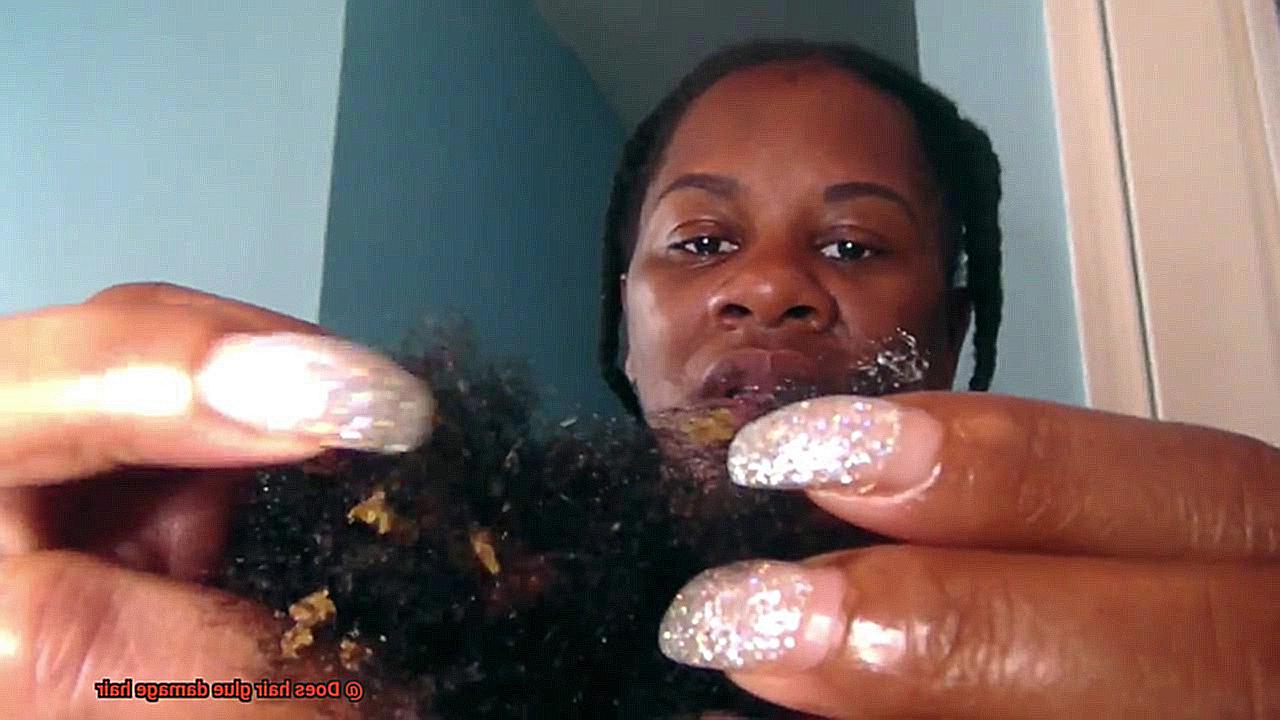
Hold onto your wigs, ladies and gentlemen. Fate may decree that you harbor an allergy towards specific ingredients lurking within hair glue, such as formaldehyde or latex. These unwelcome surprises can manifest as mild itching and redness or escalate into alarming symptoms like swelling, blistering, or even life-threatening anaphylaxis in extreme cases. Beware the unexpected twists on this hair journey.
Emergency Exit: Escaping the Clutches
Should you find yourself incessantly scratching your head or experiencing any discomfort following a rendezvous with hair glue, do not suffer in silence. Swiftly abandon the adhesive and seek medical assistance if needed.
Let the experts, be they dermatologists or allergists, unravel the enigma behind your scalp irritation and furnish you with suitable treatment options. Your scalp deserves a little TLC.
Removing Hair Glue Can Lead to Breakage, Thinning, and Bald Patches
In this adventure, we will uncover the dark side of this process and explore how it can lead to breakage, thinning, and even bald patches. Prepare yourself for a rollercoaster ride as we unravel the mysteries behind this sticky predicament.
The Harsh Reality:
Removing hair glue is no easy feat. It requires delicate handling and careful consideration to avoid damaging your precious locks and scalp. Let’s dive deeper into the reasons why this process can be so detrimental:
Chemical Conundrum:
The adhesive removers used to dissolve hair glue often contain harsh chemicals that are far from hair-friendly. These chemicals mercilessly strip away the natural oils from your hair and scalp, leaving them dry, brittle, and vulnerable to breakage. Imagine a barren desert without an oasis – a sight no one desires.
Tug of War:
Detangling and combing out extensions during the removal process can feel like a relentless tug of war. The constant pulling and tugging put immense stress on your hair strands, resulting in breakage and even thinning over time. Ouch. It’s crucial to handle your locks with utmost care and gentleness.
Residue Roulette:
After removing hair glue, you might find your hair feeling sticky or prone to tangling. This is because the glue often leaves behind stubborn residue on your strands. This residue acts as a magnet for knots, making it a nightmare to style or manage your mane. Furthermore, if you fail to properly remove this residue, it forms a barrier that blocks moisture from reaching your hair, causing dryness and further damage.
The Bald Truth:
Hold onto your hats because things are about to get scary. Removing hair glue can potentially lead to the dreaded bald patches or areas of thinning on your scalp. How does this happen, you ask? Well, when the glue is forcefully yanked off, it can take your natural hair strands along with it, causing them to break or be uprooted from the follicles. The result? Permanent hair loss in those areas. We certainly don’t want that.
The Way Forward:
Now that we are aware of the risks involved, it’s time to equip ourselves with ways to minimize damage and protect our precious locks. Here are some expert tips to guide you:
Choosing Quality Products and Following Instructions is Essential
In our previous section, we uncovered the potential pitfalls of this styling tool. But fear not. Today, I’ll be your expert guide, revealing the essential role that quality products and instructions play in achieving flawless results with hair glue. Let’s dive in.
Quality Products: The Building Blocks of Beautiful Hair
When it comes to hair glue, nothing matters more than quality. Choosing high-quality products ensures that you’re treating your locks with care. Look for glues specifically designed for hair bonding or extensions, as they contain gentle adhesive ingredients that minimize damage and protect your strands.
Crack the Code: Making Wise Choices
Don’t be swayed by flashy packaging or catchy slogans – always read the product labels. Take the time to research different brands and stay clear of harsh chemicals like formaldehyde or strong solvents. These harmful substances can wreak havoc on your hair and scalp. Instead, opt for glues that are free from these damaging ingredients.
Instructions: Your Hair’s Best Friend
Following instructions may seem obvious, but it’s a step many overlook. Each hair glue product comes with its own set of guidelines on application, removal, and maintenance – and they’re there for a reason. Straying from these instructions can spell disaster for your tresses. So take a deep breath, read the manual, and let your hair thank you later.
Safety First: The Patch Test
Before you unleash the power of hair glue on your mane, perform a patch test on a small section of your hair or scalp. This precaution is especially crucial if you have sensitive skin or pre-existing scalp conditions. Remember, it’s better to be safe than sorry.
Less is More: The Art of Precision
When it comes to applying hair glue, precision is key. Avoid going overboard with the amount of glue you use, as it can lead to clumping, excessive build-up, and ultimately, breakage. Be mindful of the quantity you apply and let your hair breathe.
Tips for Minimizing Damage When Using Hair Glue
Hair glue is a popular method for achieving long-lasting and secure hair extensions or wigs. However, improper use can lead to damage and breakage. In this article, we will share expert tips to help you minimize damage when using hair glue.
By following these guidelines, you can enjoy beautiful hair transformations while keeping your natural locks healthy and strong.
Choose a High-Quality Hair Glue:
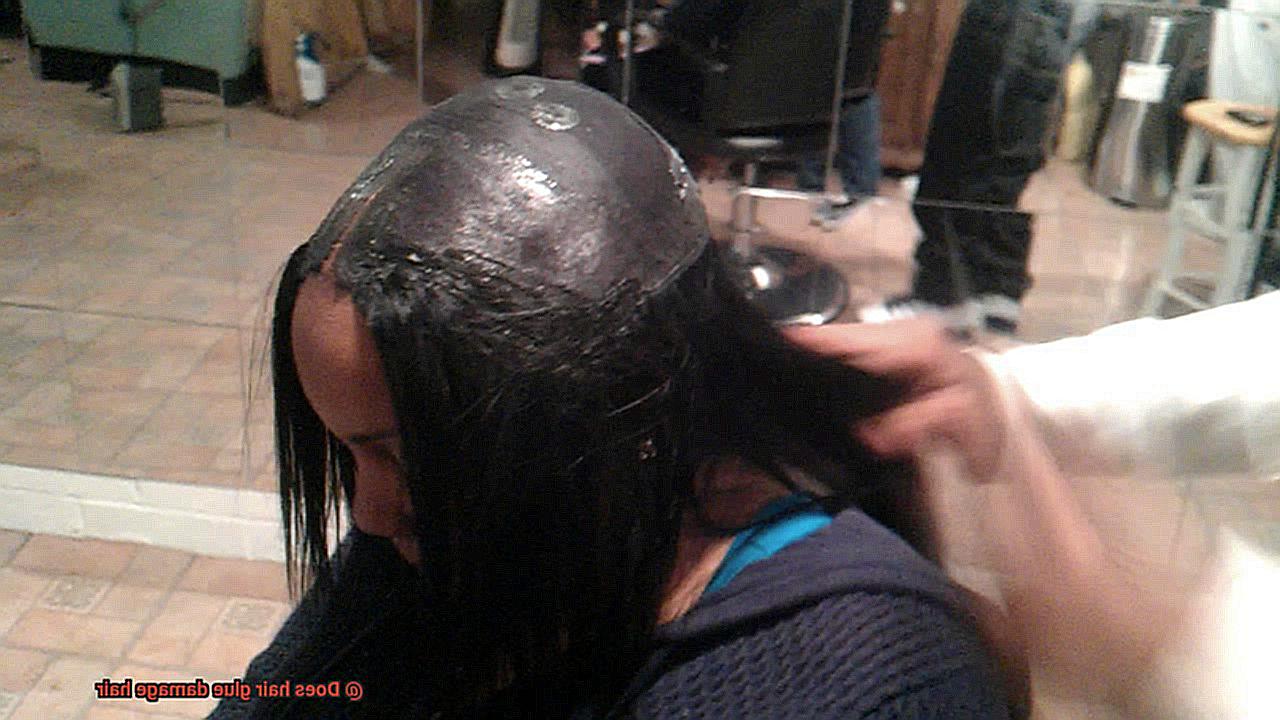
To protect your hair from damage, it’s crucial to invest in a high-quality hair glue specifically designed for extensions or wigs. Avoid cheap alternatives that may contain harsh chemicals that can cause breakage and damage to your natural hair. Look for glues labeled as “gentle” or “non-damaging” to ensure the best results.
Apply the Glue with Precision:
Less is more when it comes to applying hair glue. Use a small amount of glue only on the wefts or tracks of the extensions, avoiding direct contact with your scalp. This prevents irritation and potential allergic reactions. Be mindful of the tension and pulling during application, as excessive force can lead to breakage and damage.
Prep and Protect Your Hair:
Properly preparing your hair before applying hair glue is crucial for minimizing damage. Cleanse and dry your hair thoroughly, removing any product buildup that could interfere with adhesion. Gently detangle your hair using a wide-tooth comb or your fingers to avoid unnecessary breakage. Additionally, consider using a wig cap or scalp protector as an extra layer of protection between the glue and your scalp.
Take Regular Breaks:
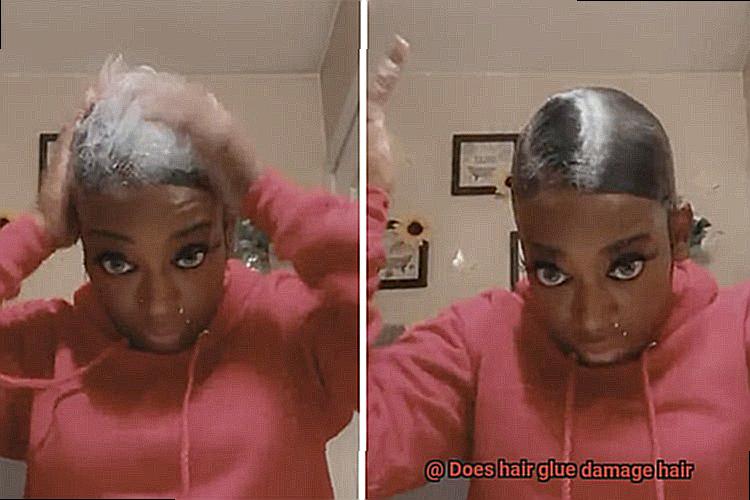
Giving your hair regular breaks from glued-on extensions is essential for maintaining its health and strength. Continuous and prolonged use of hair glue can cause tension and stress on your natural hair, leading to breakage and thinning. Allow your hair to breathe without extensions to promote healthy growth and minimize damage.
Practice Gentle Removal Techniques:
When it’s time to remove the glued extensions or wig, handle your hair with care to avoid damage. Use a professional adhesive remover specifically designed for hair glue and follow the instructions carefully. Massage the remover gently into the glued area, allowing it to soften the glue before detaching the extensions or wig. Avoid forcefully pulling or tugging, as this can cause breakage and damage to your natural hair.
Consult a Professional Hairstylist for Guidance on Application, Maintenance, and Removal of Extensions
Today, we embark on an exciting journey into the realm of extensions. But before you dive headfirst into this transformative world, let’s discuss why consulting a professional hairstylist for guidance on application, maintenance, and removal is an absolute game-changer.
Get ready to unlock the secrets behind flawless extensions while keeping your natural locks luscious and healthy.
Let’s dive in.
Assessing Hair Type and Condition:
Your hair is unique, and so are its needs. Discover how a professional hairstylist’s expertise in evaluating your hair type and condition ensures personalized recommendations for extensions that perfectly match your individuality.
The Art of Precision Application:
Creating a seamless blend between your natural hair and extensions is an art form. Learn how a professional hairstylist’s training in application techniques, from flawless sectioning to expert glue distribution, guarantees a secure attachment without compromising the health of your precious strands.
Unleash Longevity with Proper Extension Maintenance
Nurturing Your Extensions with Care:
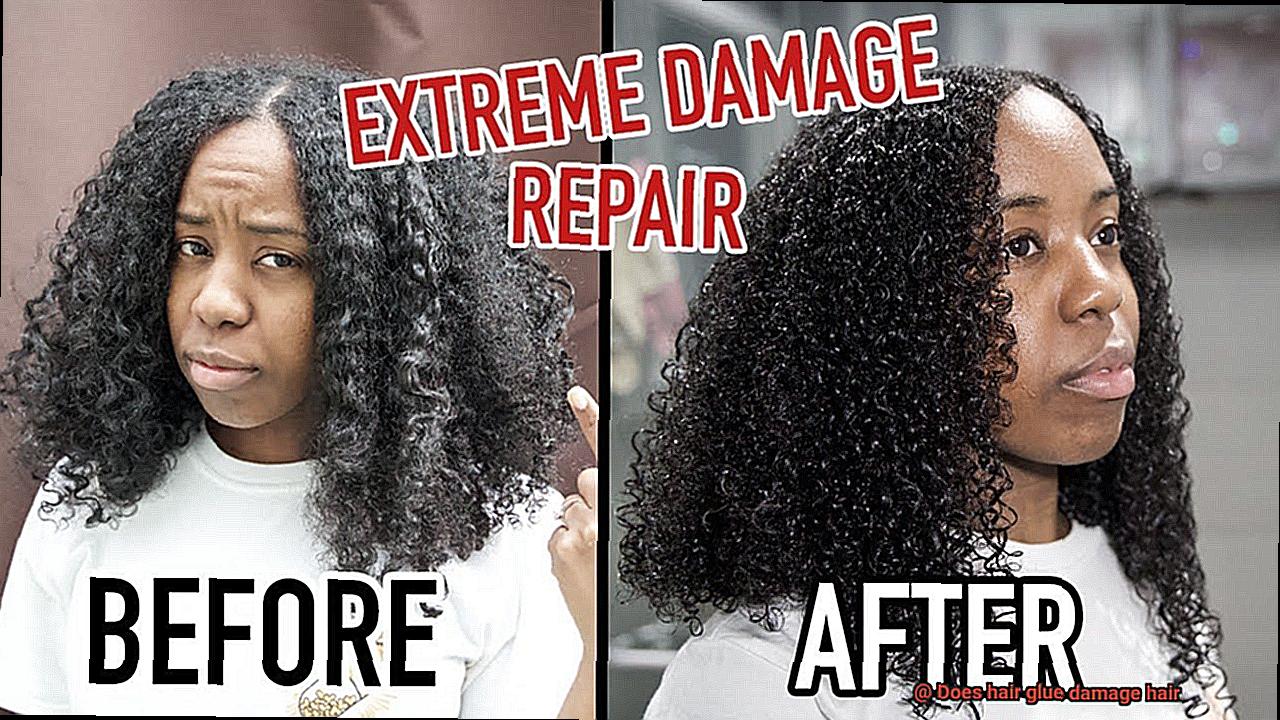
The Power of Routine Maintenance Appointments:
Bid Farewell Gracefully: Safe Removal Techniques
Expertise in Gentle Extension Removal:
Alternatives to Hair Glue
Today, we’re embarking on a journey into the realm of alternatives to hair glue. We understand that while hair glue has been a go-to choice for attaching extensions, many of you are seeking gentler options that won’t compromise the health of your beautiful locks.
Worry not, because we’ve curated an exhilarating list of alternatives that will bid adieu to hair glue and catapult you into the realm of flawless extensions. Are you ready?
Let’s dive in.
Tape-In Extensions:
First in line are the magnificent tape-in extensions. These slender strips of adhesive delicately adhere to the scalp, sandwiched between sections of natural hair. The cherry on top? No harsh chemicals or heat required.
Unlike conventional hair glue, tape-in extensions can be effortlessly removed without causing any harm to your natural strands. Talk about a double victory.
Clip-In Extensions:
These heavenly wefts of hair come equipped with small clips, allowing you to instantly amplify the length and volume of your natural tresses. The beauty of clip-in extensions lies in their versatility.
You can effortlessly remove them whenever your heart desires, without fretting about damaging your precious locks.
Sew-In Extensions:
If durability is your aim, sew-in extensions might be just what you need. This method entails tightly braiding your natural hair against the scalp and meticulously sewing wefts of hair onto the braids using a needle and thread.
Sew-in extensions can last for weeks, providing a steadfast attachment without relying on hair glue. Just remember, avoid braiding too tightly to prevent unnecessary tension on your natural mane.
Micro-Link or Micro-Bead Extensions:
For those seeking a more flexible attachment approach, micro-link or micro-bead extensions deserve your attention. In this technique, dainty metal rings or beads are fastened to sections of your natural hair, while strands of extension hair are deftly threaded through them. The icing on the cake? No chemicals or heat required. This translates to minimal damage inflicted upon your precious tresses.
fLfTTt3Dw6g” >
Conclusion
In conclusion, it is evident that hair glue can indeed cause damage to the hair.
The harsh chemicals and adhesive properties of hair glue can lead to breakage, thinning, and even scalp irritation. It is crucial to use hair glue sparingly and properly follow instructions to minimize the risk of damage.
Additionally, regular maintenance and proper removal techniques are essential for preserving the health of your hair.

